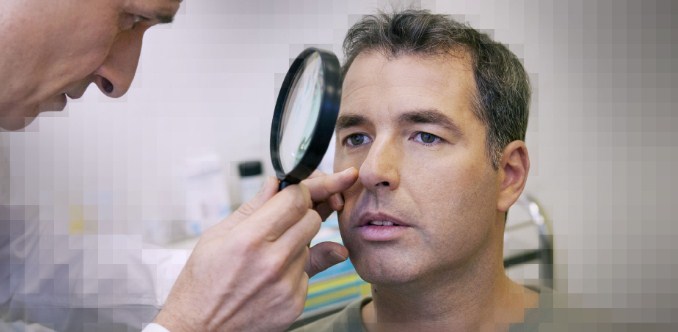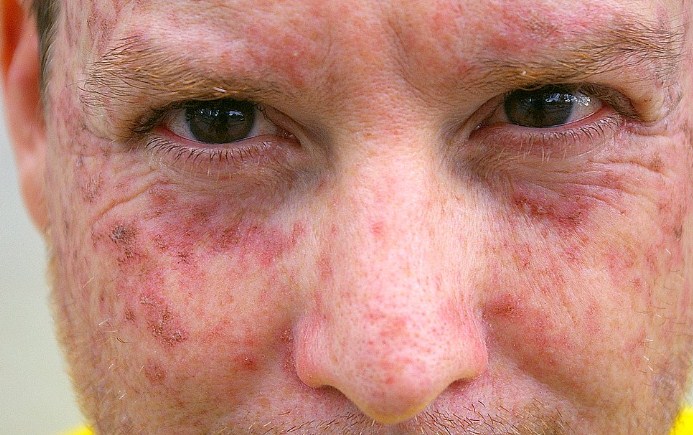Many Common Kinds Of Skin Cancer
Skin cancer takes place when skin cells are harmed, as an example, by overexposure to ultraviolet (UV) radiation from the sunlight. There are three major types of skin cancer: - Basal cell cancer - Squamous cell cancer - Melanoma - the most hazardous form of membrane layer cancer Both basal cell cancer and also squamous cell cancer are referred to as non-melanoma membrane layer cancer.

Two in three Australians will be detected with membrane layer cancer by the time they are 70, with greater than 434,000 people dealt with for one or more non-melanoma membrane cancers cells in Australia yearly. Non-melanoma skin cancer is much more common in males, with almost dual the incidence compared to ladies.
Leaving out non-melanoma skin cancer, * melanoma is the 3rd most common cancer in Australian women and the 4th most usual cancer in men, and the most usual cancer in Australians aged 15-44 years. In 2012, 12,036 Australians were identified with melanoma.
Each year, in Australia: - skin cancers cells represent around 80% of all newly identified cancers cells - in between 95 as well as 99% of skin cancers are brought on by direct exposure to the sun - General practitioners have over 1 million client appointments annually for skin cancer - The occurrence of skin cancer is among the greatest in the world, a couple of times the prices in Canada, the United States as well as the united kingdom.
* Non-melanoma skin cancer is not known to cancer pc registries.
Look for indications of skin cancer The sooner skin cancer is identified and dealt with, the better your opportunity of avoiding surgery or, in the case of a serious melanoma or various other skin cancer, possible disfigurement and even fatality. It is similarly a good concept to talk with your physician about your level of threat and also for suggestions on early detection.
It is important to be familiar with your skin and also what is regular for you so that you notice any modifications. Skin cancers cells rarely hurt and also are much more often seen than felt. Develop a routine behavior of examining your skin for brand-new places as well as adjustments to existing freckles or moles.
Exactly how to check your skin
- Ensure you inspect your whole body as skin cancers cells can often occur partially of the body not exposed to the sun, as an example soles of the feet, between fingers and also toes as well as under nails.
- Undress completely and also make certain you have excellent light.
- Use a mirror to check solid to see spots, like your back and also scalp, or get a member of the family, companion or close friend to inspect it for you. What to try to find There are three major sorts of skin cancer
- melanoma (consisting of nodular melanoma), basal cell cancer and squamous cell cancer. Melanoma
- The majority of the dangerous form of skin cancer.
- If left unattended can infect other components of the body.
- Appears as a new place or an existing place that alters in shade, dimension or form. Can appear on skin not generally subjected to the sun Nodular melanoma
- Expands swiftly.
- Looks different from common cancer malignancies. Increased and even in the shade.
- Several are red or pink as well as some are brownish or black.
- They are solid to touch and dome-shaped.
- Eventually, they start to hemorrhage and crust Basal cell cancer
- The most typical, least hazardous form of skin cancer.
- Red, light or pearly in color, looks like swelling or dry, scaly area.
- May ulcerate or fail to entirely recover.
- Grows gradually, generally on areas that are often subjected to the sun. Squamous cell cancer
- A thickened, red, flaky place that might bleed conveniently, crust or ulcerate.
- Expands over some months, generally on locations typically revealed to the sun
- Most likely to take place in people over 50 years old. ABCD melanoma discovery overview A is for Crookedness
- Try to find areas that lack symmetry. That is, if a line were drawn with the middle, the two sides would not pair up. B is for Border
- A spot with a dispersing or uneven side (notched). C is for Colour
- Blotchy places with a variety of colors such as black, blue, red, white and grey. D is for Size
- Try to find spots that are growing. These are some changes to keep an eye out for when examining your skin for signs of any cancer:
- New moles.
- Moles that boost in dimension
- A summary of a mole that ends up being notched
- A spot that changes color from brown to black or is varied.
- An area that comes to be increased or establishes a swelling within it.
- The surface area of a mole ending up being rough, flaky or sore.
- Moles that itch or tingle. - Moles that hemorrhage or weep.
- Spots that looks different from the others Mole or skin cancer?
Approximately all of us have moles.

These are not normally present at birth, but show up in childhood years and early teen years. By the age of 15, Australian youngsters have an average of more than 50 moles. Regular moles usually look alike. See your physician if a mole looks different or if a brand-new mole shows up after the age of 25. The even more moles a person has, the higher the danger of melanoma.
- Safe tinted places that range from 1mm to 10mm.
- Uniform in shape as well as also colored. Might be elevated.
- The even more moles or freckles you have the higher your danger of skin cancer.
- Might have uneven borders as well as multiple colors like brown and also black.
- Observe moles meticulously for any indication of adjustment. Although you might notice several skin adjustments, it does not necessarily suggest that you have skin cancer; nevertheless, it is important that you see your General Practitioner have them examined even more. Your GP can talk about your skin cancer risk and also suggest you on your requirement for medical checks or self-examination. It can be challenging to recognize whether something on your skin is a safe mole or normal sun damages, or an indicator of cancer.
When in doubt, talk with your GP. What is my skin kind?
Skin kinds that are more conscious ultraviolet (UV) radiation shed faster as well as go to a better danger of skin cancer. All skin kinds can be damaged by the way too much UV radiation. Skin kinds that are more sensitive to UV radiation shed more quickly as well as go to a higher threat of skin cancer. Individuals with naturally dark skin (usually skin kind V or VI) still require to take care in the sunlight even though they may seldom if ever, obtain sunburnt.
The larger quantity of melanin in extremely dark skin provides natural defense from UV radiation. It indicates the danger of skin cancer is reduced. Eye damage can take place no matter skin kind. High degrees of UV radiation have likewise been connected to harmful effects on the body immune system.
Individuals with very dark skin do not usually need to use sunblock (but this continues to be a personal decision) however they ought to wear hats or sunglasses to protect their eyes. Vitamin D deficiency may be a better health concern for individuals with normally dark skin, as it is more difficult for people with this skin kind to make vitamin D.
Individuals with normally darker skin might call for approximately three to 6 times more sunlight exposure to aid with their vitamin D levels. Skin types Typically burns, hardly ever tans. Tends to have blemishes, red or reasonable hair, blue or green eyes. Usually burns, sometimes tans.
Tends to have blue or brown eyes, and light hair. Sometimes burns typically tan. Tends to have brown hair and eyes. Rarely burns, commonly tans. Tends to have dark brown eyes and also hair. Dark brown skin. Hardly ever burns, tans a lot. Deeply pigmented, dark brown to black skin. Never burns.